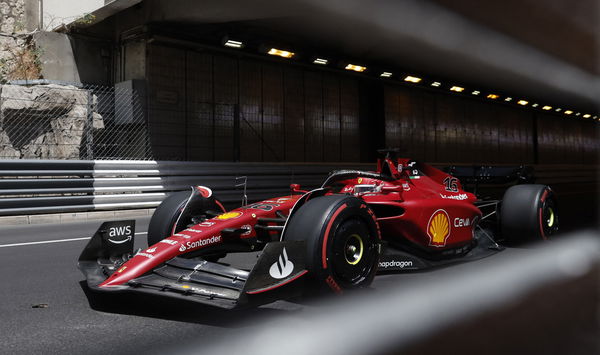
via Reuters
Formula One F1 – Monaco Grand Prix – Circuit de Monaco, Monte Carlo, Monaco – May 28, 2022 Ferrari’s Charles Leclerc in action during practice REUTERS/Benoit Tessier

via Reuters
Formula One F1 – Monaco Grand Prix – Circuit de Monaco, Monte Carlo, Monaco – May 28, 2022 Ferrari’s Charles Leclerc in action during practice REUTERS/Benoit Tessier
Ferrari and their struggles with crucial strategy calls continued, and this time it was in Monaco. Coming into the race, they had an advantage as Charles Leclerc and Carlos Sainz occupied the front row. On a track that is hard to overtake, the Italian team knew their chances of a victory were high.
ADVERTISEMENT
Article continues below this ad
However, come Sunday, rain played a huge part. As a result, the race was delayed, which helped Ferrari. They immediately changed their tires from slick to wet ahead of the Grand Prix. The conditions started improving after the race started, and both the drivers kept their positions in the early part of the race.
Then came the twist as Red Bull once again pounced on the Prancing Horse’s errors. This time a poor strategy call was the reason, and the Bulls went home with more points and extended their lead in the standings. So, how did the Ferrari management fail to implement a strategy that cost them a win?
Ferrari’s call to bring in Charles Leclerc for intermediaries
Pierre Gasly was the first driver to change from wet tires to intermediaries. And his pace massively improved, so teams realized that inter was the tire to be on. However, as Monaco is hard to overtake, Ferrari wanted to retain their position and kept both Leclerc and Sainz out.

via Reuters
Formula One F1 – Monaco Grand Prix – Circuit de Monaco, Monte Carlo, Monaco – May 28, 2022 Ferrari’s Charles Leclerc with second place Ferrari’s Carlos Sainz Jr. after qualifying in pole position Pool via REUTERS/Christian Bruna
While the Italian team had something to play for, Red Bull took a gamble. The Milton-Keynes outfit called in Perez during lap 17 and changed his tires to inter. It worked to perfection as he started closing down the gap. As a result, Ferrari pitted Leclerc for intermediaries soon.
Team strategist Inaki Rueda revealed they predicted the Monegasque will come out of the pits one second ahead of Perez. But that was not the case, as the Mexican was quicker than they expected. So, he went ahead of the Ferrari driver. This is where the Prancing Horses lost their race with Leclerc.
While all this blunder unfolded, Carlos Sainz stood firm. He stayed out and took the lead of the race. Further, he clearly conveyed to his team that the strategy was to change from wet to slick tires as the track started drying out.
The second pit stop debacle
Although Leclerc lost his lead as a result of the first pit stop, he still had the podium place covered. Further, Sainz was leading the race and a double podium was possible. This was crucial, as the Maranello outfit could have closed the gap at the top.
Another #MonacoGP trophy in the cabinet for @CarlosSainz55 🤘
Not quite the gold one, but he came so close 🤏#essereFerrari 🔴 pic.twitter.com/6sfWBbHj24
— Scuderia Ferrari (@ScuderiaFerrari) May 30, 2022
As the track dried up, it was time for the Spaniard to pit to slick tires. Ferrari, however, brought Leclerc as well in an attempt to undercut Perez and secure 1-2. But, as things turned out, the Monegasque came behind Verstappen in P4 as the pit stop took longer than expected.
Speaking of the incident, Rueda said, “The gap in between our cars was 5 seconds. It was time for a doppio, a double pit stop. A comfortable doppio is done 6 seconds in between the cars, but we thought 5 and a half seconds might be enough.”
ADVERTISEMENT
Article continues below this ad
“As the cars got closer and closer, the pit entry the gap was narrowed. In the pit entry, the gap was only 3 and a half seconds.”
“We had made a last-second attempt to try and tell Charles to stay out, but it was too late. He had already veered into the pit lane. In this doppio, Charles lost two seconds. That was crucial.”
ADVERTISEMENT
Article continues below this ad
Meanwhile, Sainz’s race was also affected as Nicholas Latifi held him up for over 3 seconds. Subsequently, Perez took the lead and won the race while Ferrari drivers finished 2nd and 4th. On an evening where they needed to get their strategy right, they ultimately failed.
Do Ferrari struggle with data-driven strategy calls? What are your thoughts about this?
ADVERTISEMENT
ADVERTISEMENT
ADVERTISEMENT
ADVERTISEMENT

